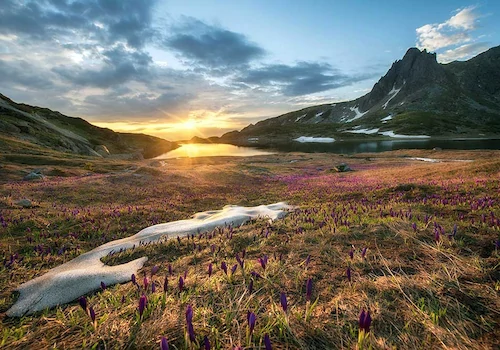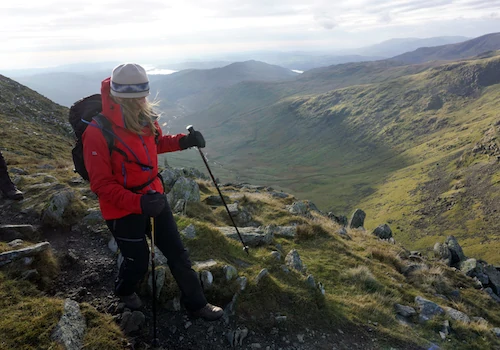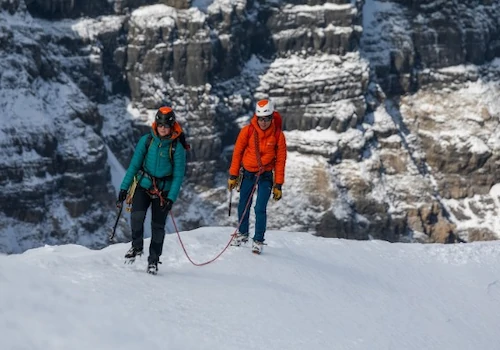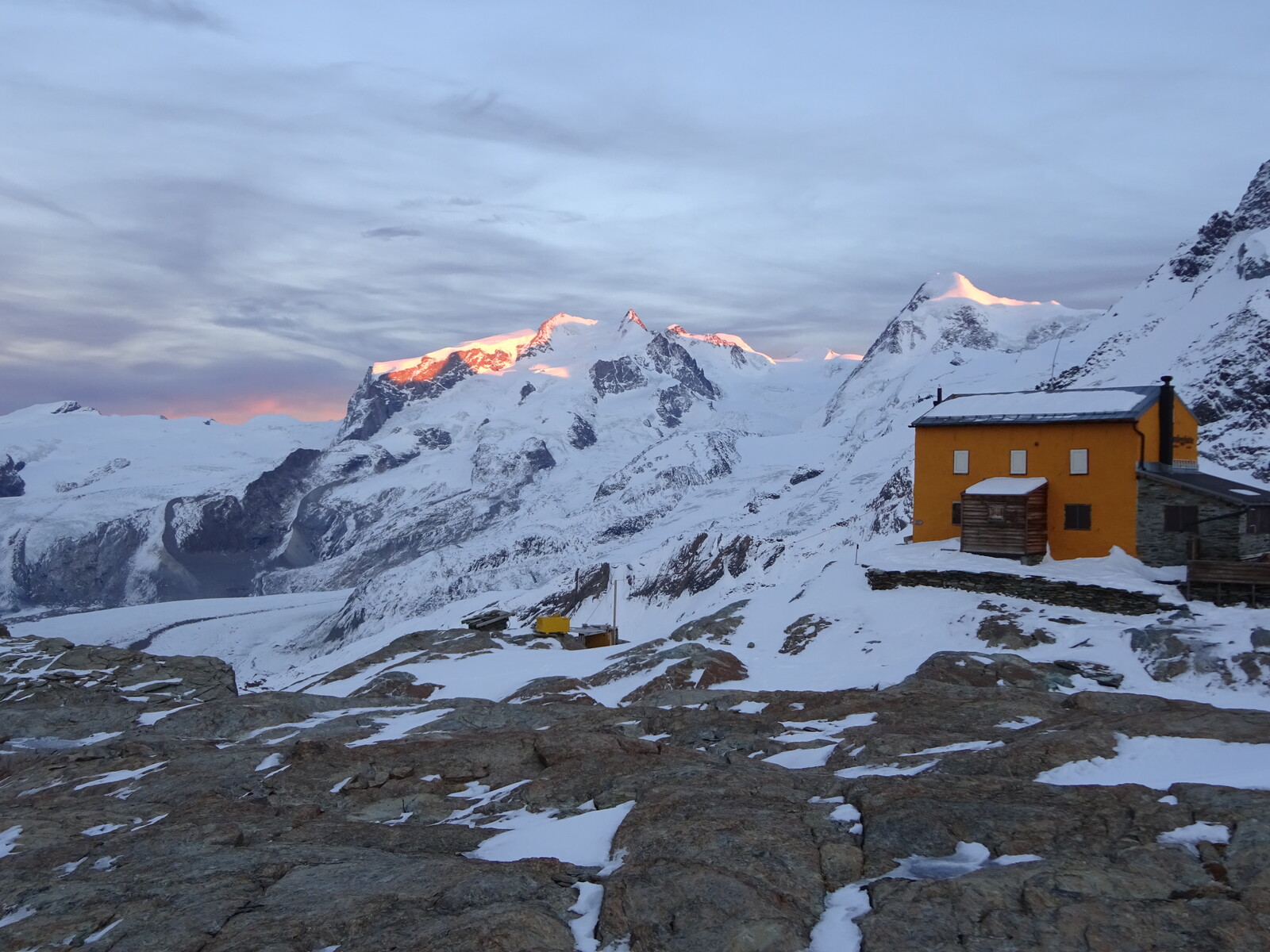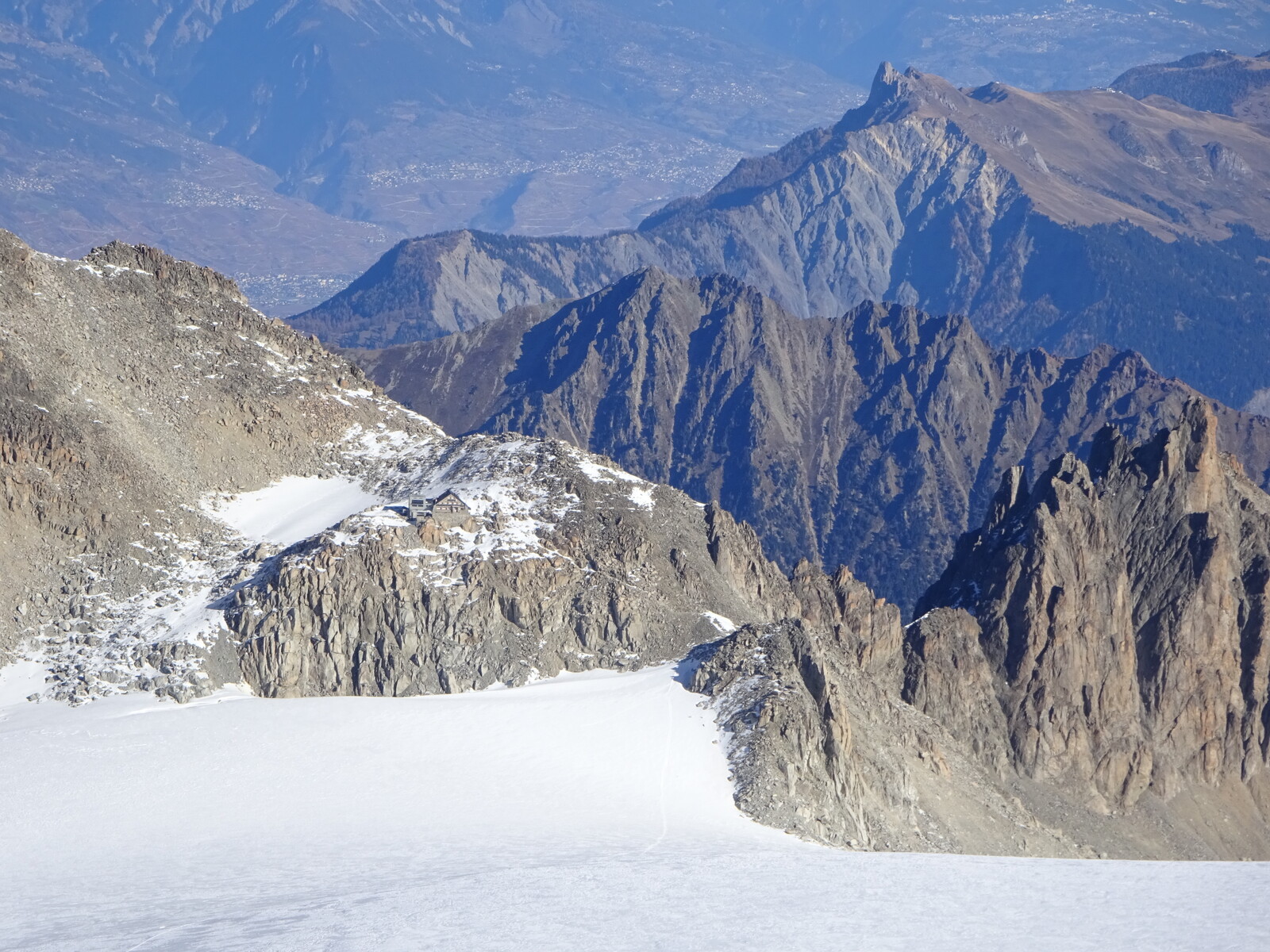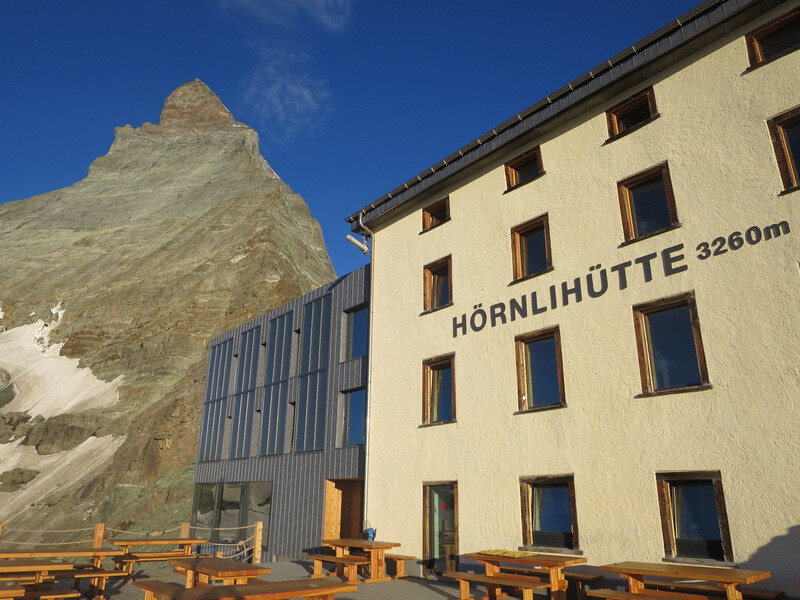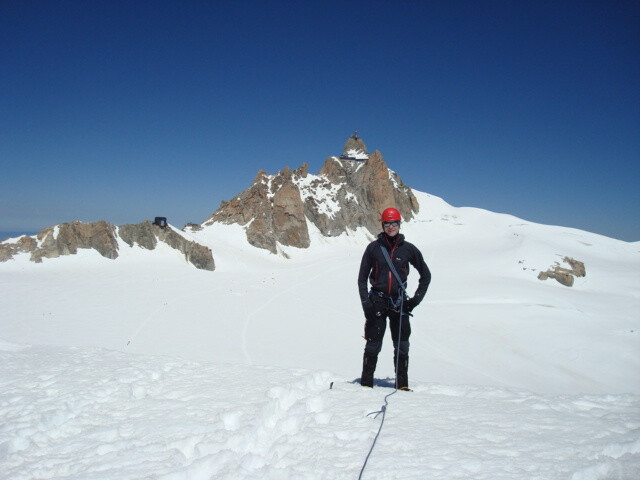Also known as refuges, Hütte, rifugios or cabanes, Alpine huts take you to some spectacular spots right up in the mountains, and are part of the whole charm of Alpine mountaineering. If you’ve never stayed in an Alpine hut before it can be hard to know exactly what to take, and what the etiquette is around meals, equipment, sleeping arrangements and so on. Here’s our guide on what to expect in most huts we use in the Alps. Every hut is different and some have their own quirks, however this will give you a good idea of how things work.

- Expeditions
By Region
By Month
By Grade
By Height
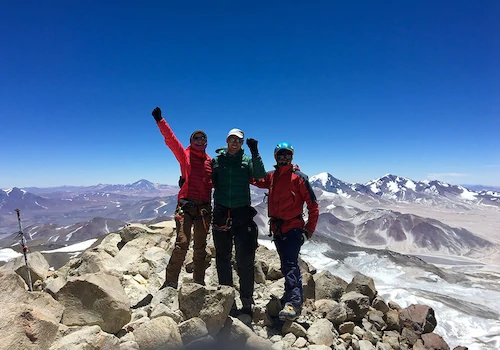
- Treks
- UK & Alpine
- Schools
- Hire
- News
- Shop
What to expect at an Alpine Hut
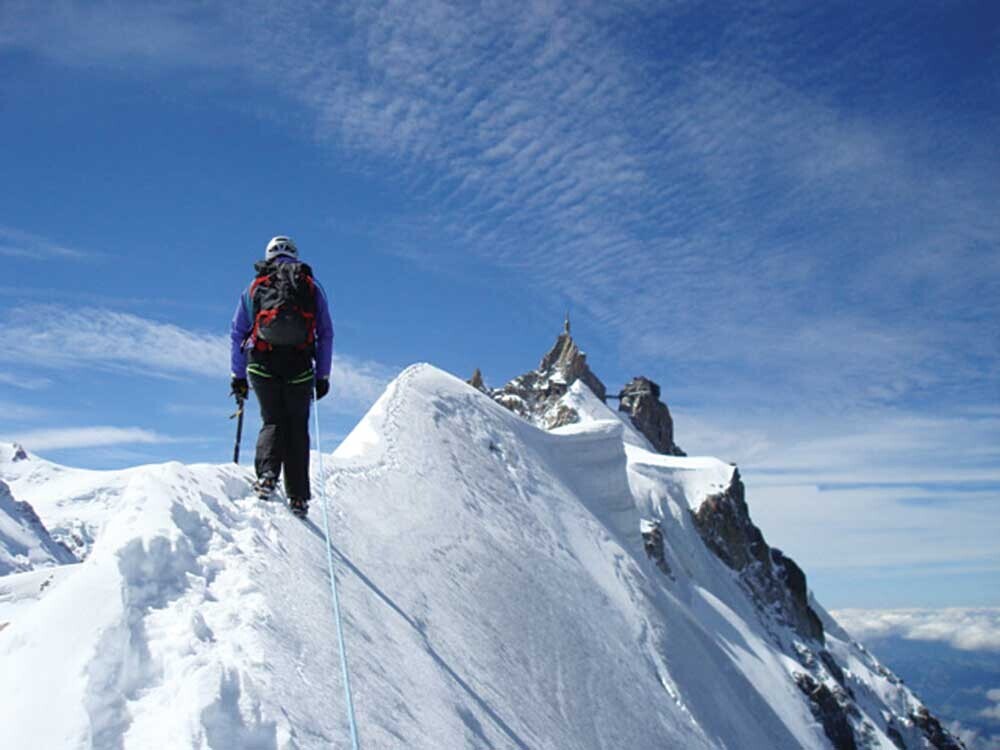
A beginner's guide to Alpine Huts
Arrival
When you arrive at a hut there will be a boot room in the entrance. Huts provide crocs or slippers so you can swap your boots for a pair of crocs to wear inside. Boots are not allowed inside the hut, and axes and crampons must also be left in the entrance. After you have met the hut guardian and checked in, go to the dorm and roll out a blanket and your liner on a bed to claim your spot. Usually the guardian will show you which dorm you are in.
Sleeping arrangements
Most Alpine huts have several dorm rooms, each with long 'Alpine' bunks with mattresses lined up next to each other. It’s cosy! Blankets and pillows are provided, but you need to bring your own sleeping bag liner to use under a blanket. Silk liners are best as they are light and pack down small. There isn't usually electricity in the dorms and there may be no lights so keep your headtorch handy. Another reason to make your bed when you arrive!
Organisation
It's a good idea to settle your bill and pack your bag for the next day before you go to bed, as you will be getting up early (the infamous Alpine start) and breakfast time can be busy. Some huts have a quiet rule after 10pm, although many people will be in bed well before this. Once lights are out, keep noise to a minimum, as most people will be getting an early night before their trek or climb the next day. In the morning, fold up your blanket before you leave.
How warm is it?
Most huts are pretty well heated, so pack what you need for your trek or climb and this will be fine for at the hut as well. Most people will wear their leggings/base layer or a pair of shorts and a t-shirt at the hut. Bear in mind dorms are shared/mixed. Ideally, to avoid carrying up extra layers to the hut, wear your leggings and base layer top that you will wear the next day on the hill. If you decide to take extra layers, you can leave these in a basket at the hut if you are going to be coming back past the hut at the end of the day (your guide will advise).
Hut Meals
We book the huts on a half board basis, so dinner and breakfast the next day will be provided. All meals are eaten in the dining room at long tables. Sometimes you will be assigned a table by the hut guardian. Meals in the huts are excellent, dinner usually consists of a set 3-course meal with a soup, main course (plenty of pasta, rice with meat or a casserole) and a salad or desert. Breakfast will consist of cereal, bread, jam, cheese and coffee. In Swiss huts Marsch Tee is provided for free to fill up your bottles for the day. (Please let us know any dietary requirements).
Packed lunch
You need to bring your own packed lunches for the mountain days. This is best bought in the valley, such as bread/pita, cheese, salami, cereal bars, chocolate. Sometimes it's easier and cheaper to bring cereal bars from home if there are particular ones you like. Besides dinner and breakfast, any other drinks, snacks, sweets, chocolate, beer etc can be purchased in the huts but is expensive, as the ingredients are brought in by helicopter. You can purchase boiling water for hot drinks so you may wish to carry tea bags/coffee or cuppa soups.
Facilities
All huts have a communal dining room, dorm rooms and basic wash facilities. Traditional huts usually only have cold water and some wash basins, but modern and larger huts may have hot showers that are operated with 1-2 Euro tokens. Toilets may be inside or outside. Expect the huts to be fairly basic but with excellent food and top views!
What to pack
We recommend packing as light as possible and remember that you are carrying everything up and down. Your rucksack will mainly contain food, water, axe, crampons and layers for on the hill. We provide a full kit list upon booking and your guide will run through kit and what you need to take before you leave for the hut. - Remember your earplugs in case of snorers in your dorm!

